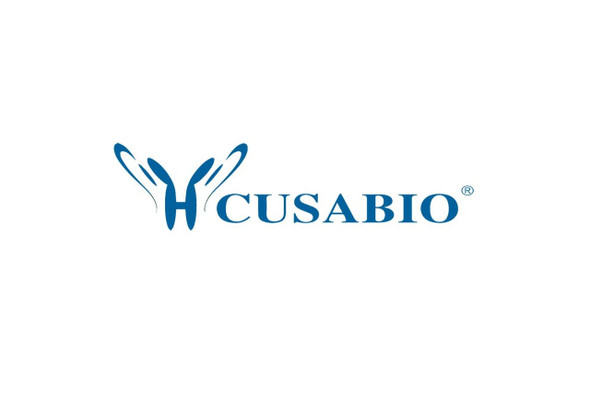Cusabio Mouse Recombinants
Recombinant Mouse Protein S100-A8 (S100a8) | CSB-EP020641MOe0
- SKU:
- CSB-EP020641MOe0
- Availability:
- 3 - 7 Working Days
Description
Recombinant Mouse Protein S100-A8 (S100a8) | CSB-EP020641MOe0 | Cusabio
Alternative Name(s): Calgranulin-AChemotactic cytokine CP-10Leukocyte L1 complex light chain;Migration inhibitory factor-related protein 8 ;MRP-8 ;p8Pro-inflammatory S100 cytokine;S100 calcium-binding protein A8
Gene Names: S100a8
Research Areas: Others
Organism: Mus musculus (Mouse)
AA Sequence: PSELEKALSNLIDVYHNYSNIQGNHHALYKNDFKKMVTTECPQFVQNINIENLFRELDINSDNAINFEEFLAMVIKVGVASHKDSHKE
Source: E.coli
Tag Info: N-terminal GST-tagged
Expression Region: 2-89aa
Sequence Info: Full Length of Mature Protein
MW: 37.2 kDa
Purity: Greater than 90% as determined by SDS-PAGE.
Relevance: S100A8 is a calcium- and zinc-binding protein which plays a prominent role in the regulation of inflammatory processes and immune response. It can induce neutrophil chotaxis and adhesion. Predominantly found as calprotectin (S100A8/A9) which has a wide plethora of intra- and Extracellular domain functions. The intracellular functions include: facilitating leukocyte arachidonic acid trafficking and metabolism, modulation of the tubulin-dependent cytoskeleton during migration of phagocytes and activation of the neutrophilic NADPH-oxidase. Activates NADPH-oxidase by facilitating the enzyme complex assbly at the cell mbrane, transferring arachidonic acid, an essential cofactor, to the enzyme complex and S100A8 contributes to the enzyme assbly by directly binding to NCF2/P67PHOX. The Extracellular domain functions involve proinfammatory, antimicrobial, oxidant-scavenging and apoptosis-inducing activities. Its proinflammatory activity includes recruitment of leukocytes, promotion of cytokine and chokine production, and regulation of leukocyte adhesion and migration. Acts as an alarmin or a danger associated molecular pattern (DAMP) molecule and stimulates innate immune cells via binding to pattern recognition receptors such as Toll-like receptor 4 (TLR4) and receptor for advanced glycation endproducts (AGER). Binding to TLR4 and AGER activates the MAP-kinase and NF-kappa-B signaling pathways resulting in the amplification of the proinflammatory cascade. Has antimicrobial activity towards bacteria and fungi and exerts its antimicrobial activity probably via chelation of Zn2+ which is essential for microbial growth. Can induce cell death via autophagy and apoptosis and this occurs through the cross-talk of mitochondria and lysosomes via reactive oxygen species (ROS) and the process involves BNIP3. Can regulate neutrophil number and apoptosis by an anti-apoptotic effect; regulates cell survival via ITGAM/ITGB and TLR4 and a signaling mechanism involving MEK-ERK. Its role as an oxidant scavenger has a protective role in preventing exaggerated tissue damage by scavenging oxidants. The iNOS-S100A8/A9 transnitrosylase complex is proposed to direct selective inflammatory stimulus-dependent S-nitrosylation of multiple targets such as GAPDH, ANXA5, EZR, MSN and VIM by recognizing a [IL]-x-C-x-x-[DE] motif; S100A8 ses to contribute to S-nitrosylation site selectivity .
Reference: Anti-infective protective properties of S100 calgranulins.Hsu K., Champaiboon C., Guenther B.D., Sorenson B.S., Khammanivong A., Ross K.F., Geczy C.L., Herzberg M.C.Antiinflamm. Antiallergy Agents Med. Chem. 8:290-305(2009)
Storage: The shelf life is related to many factors, storage state, buffer ingredients, storage temperature and the stability of the protein itself. Generally, the shelf life of liquid form is 6 months at -20?/-80?. The shelf life of lyophilized form is 12 months at -20?/-80?.
Notes: Repeated freezing and thawing is not recommended. Store working aliquots at 4? for up to one week.
Function: S100A8 is a calcium- and zinc-binding protein which plays a prominent role in the regulation of inflammatory processes and immune response. It can induce neutrophil chemotaxis and adhesion. Predominantly found as calprotectin (S100A8/A9) which has a wide plethora of intra- and extracellular functions. The intracellular functions include
Involvement in disease:
Subcellular Location: Secreted, Cytoplasm, Cytoplasm, cytoskeleton, Cell membrane, Peripheral membrane protein
Protein Families: S-100 family
Tissue Specificity:
Paythway:
Form: Liquid or Lyophilized powder
Buffer: If the delivery form is liquid, the default storage buffer is Tris/PBS-based buffer, 5%-50% glycerol. If the delivery form is lyophilized powder, the buffer before lyophilization is Tris/PBS-based buffer, 6% Trehalose, pH 8.0.
Reconstitution: We recommend that this vial be briefly centrifuged prior to opening to bring the contents to the bottom. Please reconstitute protein in deionized sterile water to a concentration of 0.1-1.0 mg/mL.We recommend to add 5-50% of glycerol (final concentration) and aliquot for long-term storage at -20?/-80?. Our default final concentration of glycerol is 50%. Customers could use it as reference.
Uniprot ID: P27005
HGNC Database Link: N/A
UniGene Database Link: UniGene
KEGG Database Link: KEGG
STRING Database Link: STRING
OMIM Database Link: N/A









